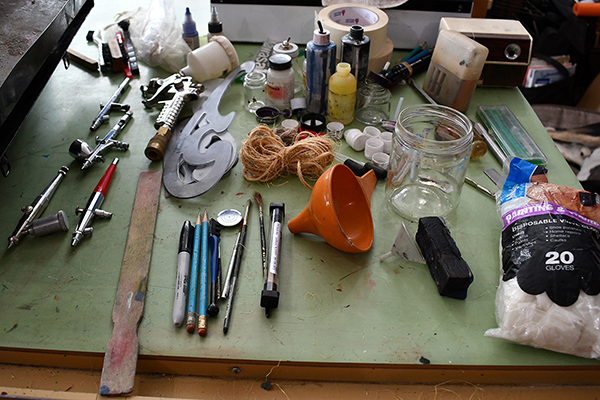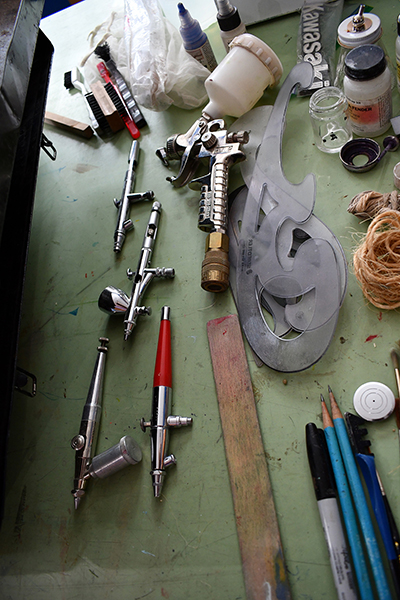 A Big Mess
A Big Mess
After emptying the airbrush toolbox, I lay all the tools and supplies on my drawing table. Can you believe that all of this fit inside of that box? With it empty and clean I concentrate on going through everything seeing what is no good and what is still in good shape. It has been sitting around in this studio for a decade so I really don’t know what kind of shape everything is in till I can check it all out. Need to do an inventory and then load it back up in some semblance of order.
Parts & Pieces
These items are replacement parts for each brand of airbrush. From the left to the right, there are nozzle tips, replacement metal needles, air compressor connector hose ends, airline filter, and hose O rings. There are also a couple of clips and brush holder wires on the top left there.
Airbrushes
Left to the right again, there are airbrushes (see closeup below) and a wooden paint stir stick. French curves, brushes/pen/pencils, paint pots with feeder tubes and caps, twine to hold stuff with. Funnels, glass jar for paint mixing or water cleanup, Exacto knife and blades, and a package of gloves. These are five workhorses in the toolbox including Iwata, Paasch, and I’m not sure what brand the big guy is. The rather large airbrush with a white jar above the trigger grip is really handy for murals or larger areas of coverage.
These are five workhorses in the toolbox including Iwata, Paasch, and I’m not sure what brand the big guy is. The rather large airbrush with a white jar above the trigger grip is really handy for murals or larger areas of coverage.
The difference that you can obviously see on the different models is where the paint holder is located. A “gravity feed” system has a paint cup on the top of the brush, using gravity to deliver the paint into the air stream. A jar attached underneath the brush utilizes a “siphon feed” system. Have you ever siphoned gas, sucked on a hose, and then put the hose into the container you are filling? That is a siphon feed system.
Airbrushes also have different types of triggers. If you want this information check out the book in the previous blog post.
There is a stack of french curves on the right side of the airbrushes that are used as shields when you spray. These are the most heavily used plastic guys in the box. You find yourself cleaning these brushes and curves repeatedly as you do any airbrush work.